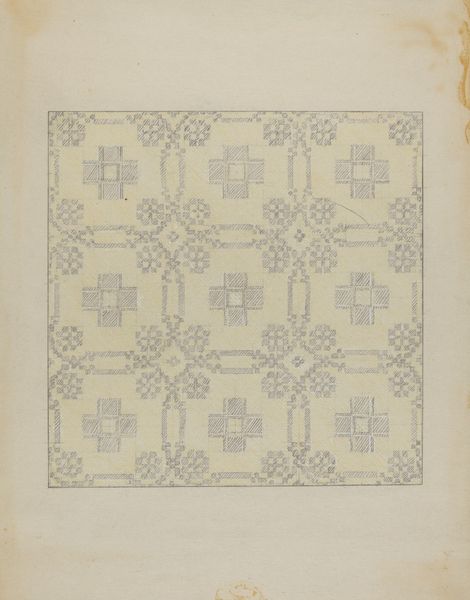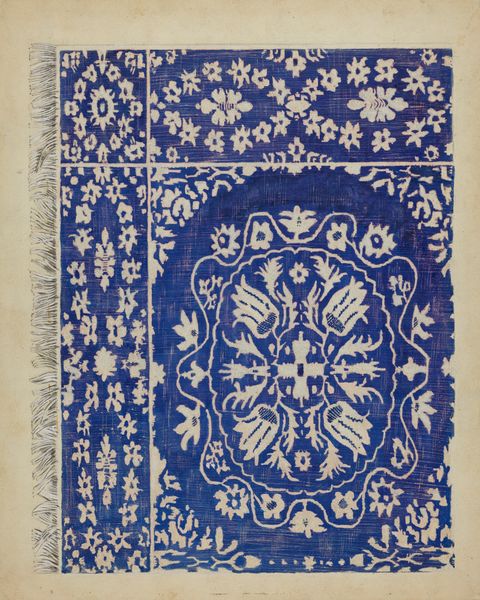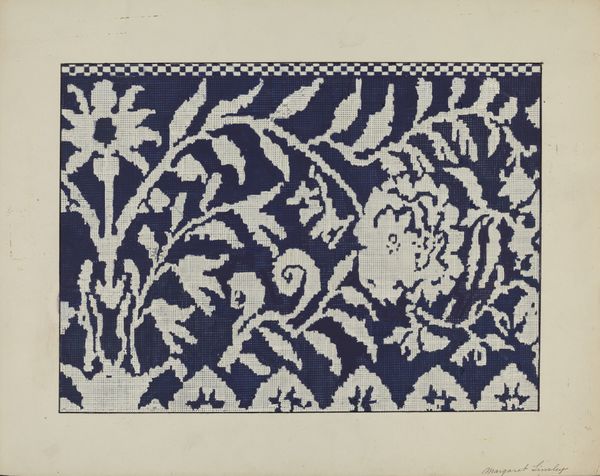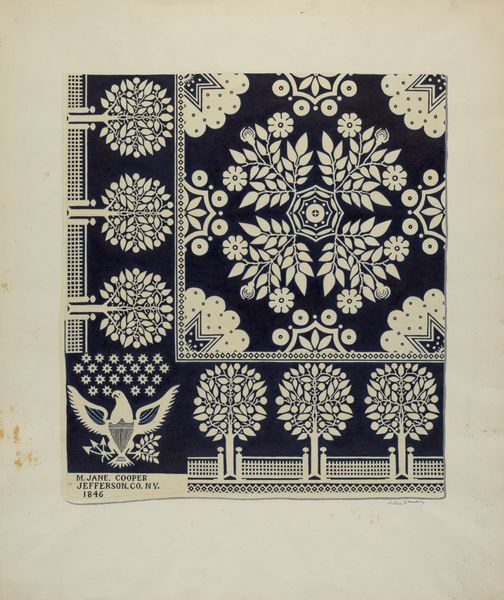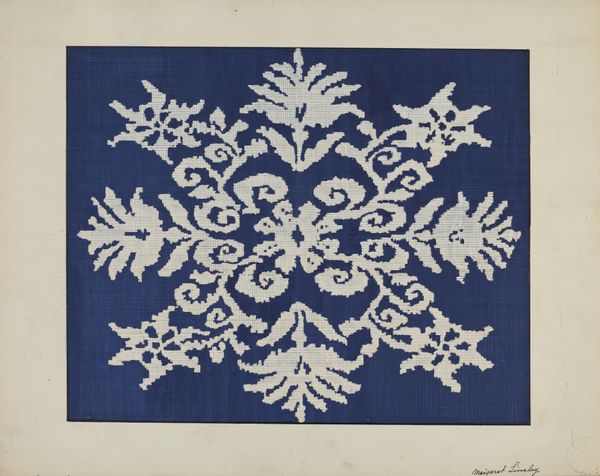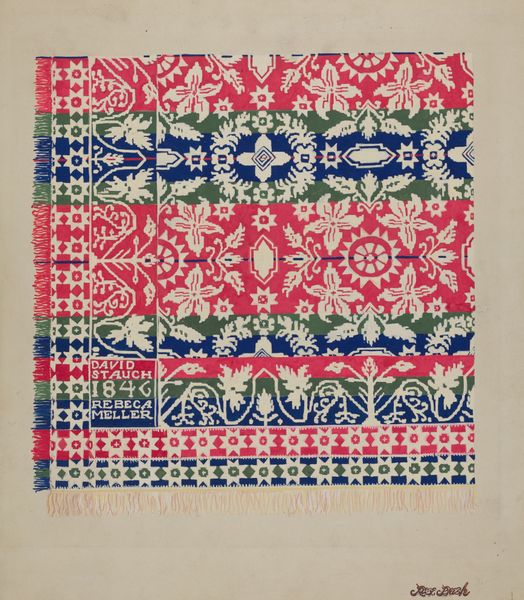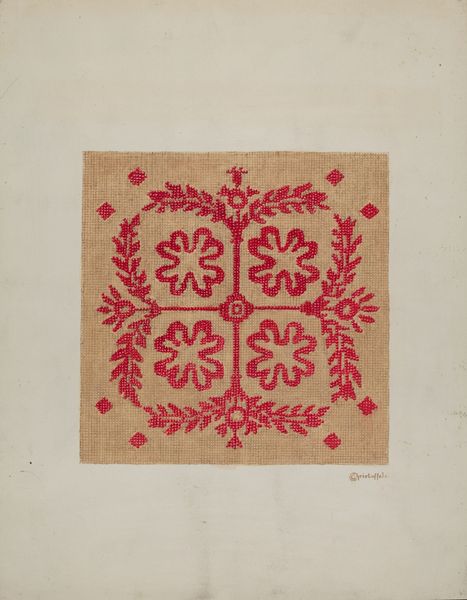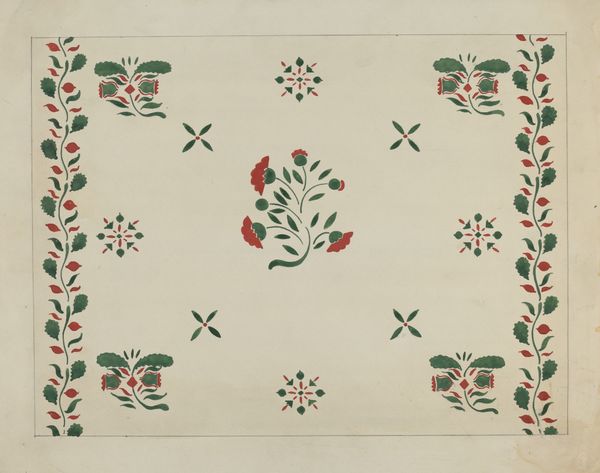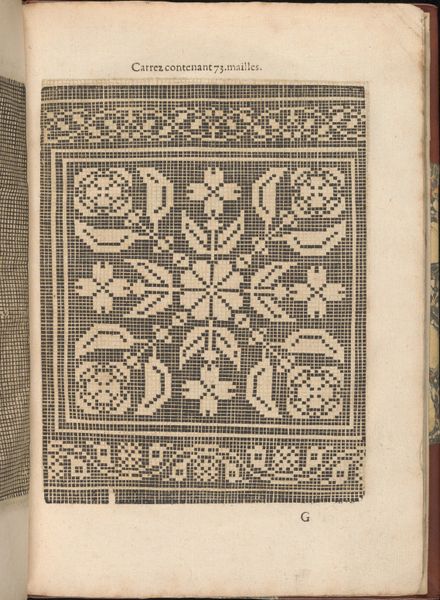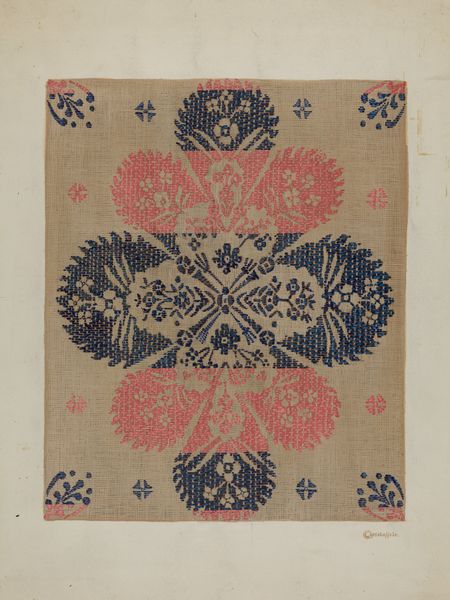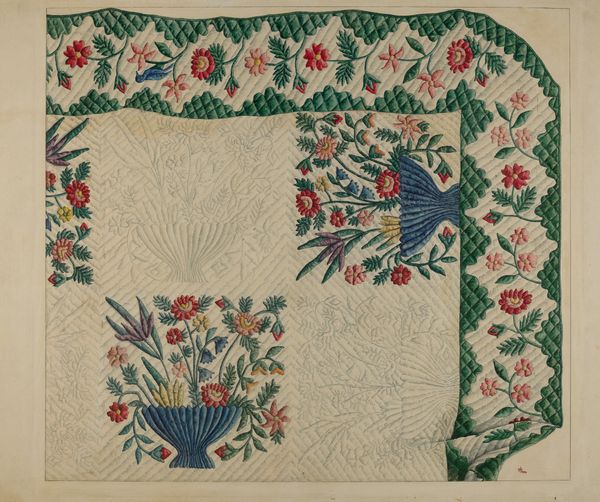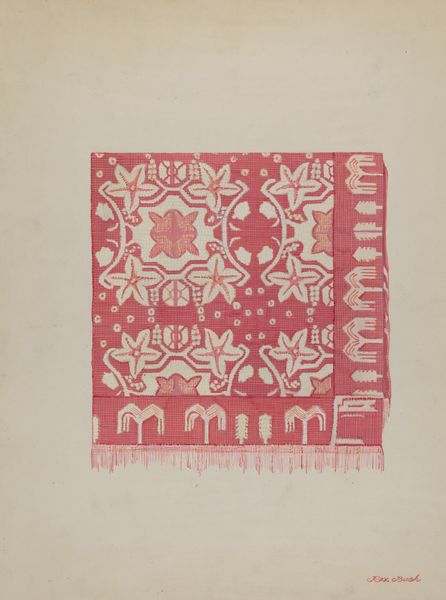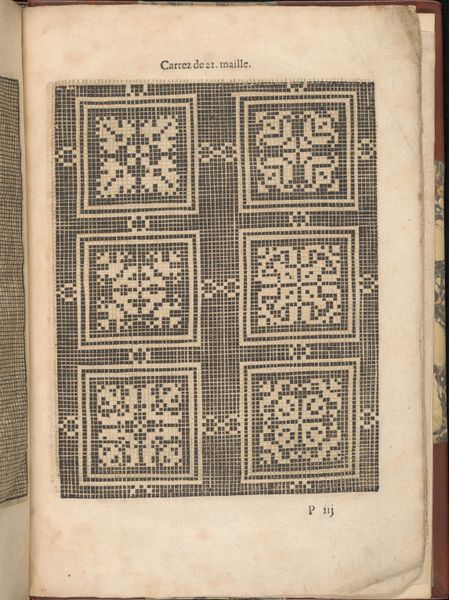
textile
#
decorative element
#
folk-art
#
muted colour palette
#
textile
#
folk-art
#
geometric
#
decorative-art
#
decorative art
Dimensions: overall: 53.4 x 52.3 cm (21 x 20 9/16 in.)
Copyright: National Gallery of Art: CC0 1.0
Curator: Ah, this is the Tyler Coverlet, created around 1841. It is thought to be attributed to Arthur G. Merkley, who operated in Jefferson Co. NY. The piece is a testament to the artistry of textiles during that period, incorporating print and drawing techniques to create a captivating piece of folk art. Editor: My first impression? A study in symbolic contrasts! The overall deep blue sets a regal yet somber tone, while the meticulously woven, almost pixelated patterns, burst with symbolic meaning. It feels very grounded. Curator: The composition reflects societal values of the time, with a clear emphasis on family and home. Note the visual representations, the trees lining a fence, suggesting property and belonging. Merkley made multiple coverlets like this as it became a booming business as families desired unique, symbolic pieces for the home. Editor: Precisely! The stylized trees speak to the tree of life, a common symbol of growth and connection to ancestors. And the lion, seemingly guarding the corner...lions traditionally represent courage, royalty, yes, but also, more subtly, vigilance over the domestic space. There's a silent narrative at play. Curator: This coverlet likely served multiple purposes, acting as both a functional object for warmth and a symbolic display of status. The maker's name, “Maryett S. Dickerson,” is emblazoned there, making it not just something practical but also deeply personal. It also provides clues on the industrial output of the time in this part of the U.S. Editor: Indeed, the inclusion of Dickerson’s name transforms it from mere craft to cultural artifact. It is the visual telling of one’s own personal narrative. The muted colours and almost rigid geometry remind me of folk traditions trying to assert their place within an increasingly industrialized America. Curator: Its value lies in how it portrays the evolution of textile art and provides insight into 19th-century industrial growth. This really marks how textile practices reflect the growing middle class and democratization. Editor: Looking closer, this Coverlet reveals how artistry infuses even the most utilitarian items with enduring meaning. Curator: Precisely. It illustrates not only artistry but the societal structure of early America. Editor: Ultimately, it reveals the emotional, symbolic depth residing within an ostensibly simple, everyday object.
Comments
No comments
Be the first to comment and join the conversation on the ultimate creative platform.
